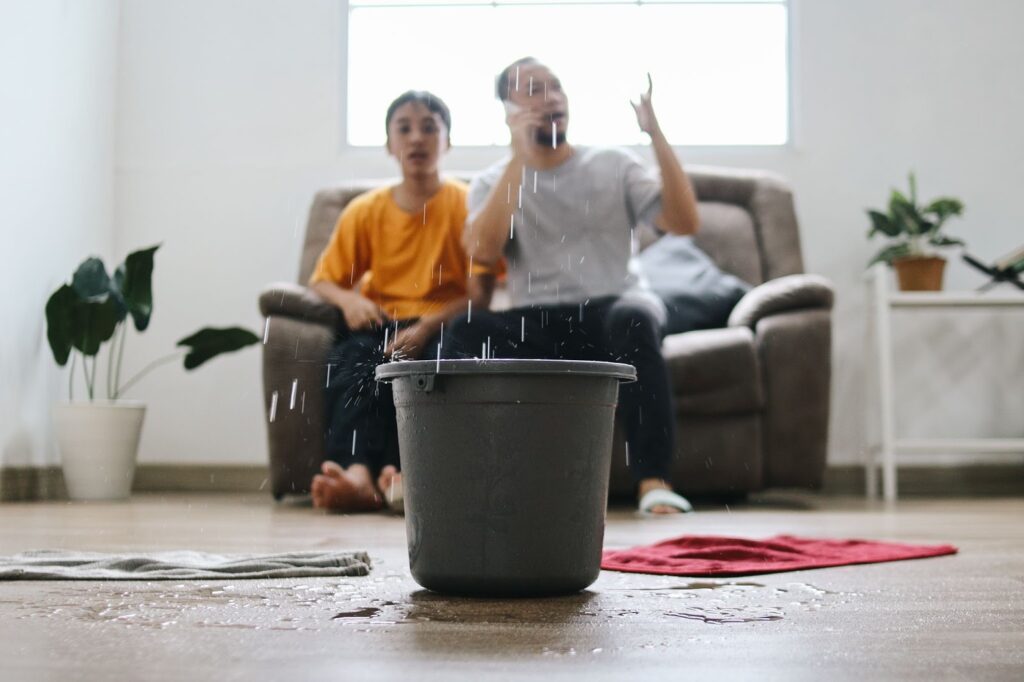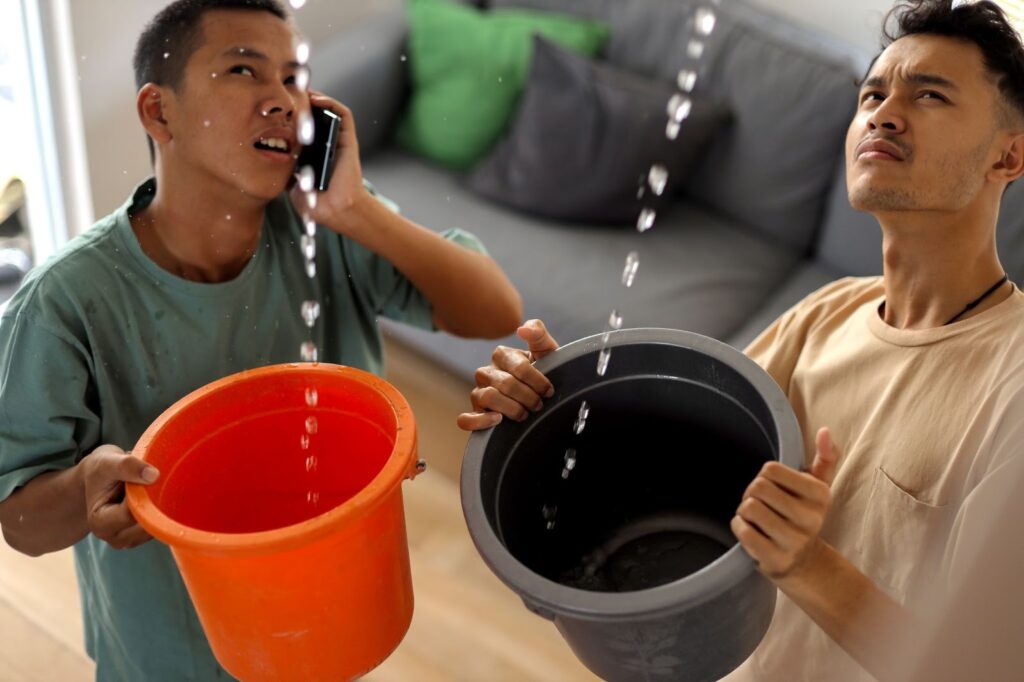
The Different Categories and Classes of Water Damage Explained
When a leak, burst pipe, or storm intrudes on your home or business, it’s tempting to judge the mess by how bad it looks. Water damage restoration pros don’t. They classify water damage by its category (how contaminated the water is) and its class (how far moisture has spread and how hard it will be to dry). Understanding both helps you make safer choices, protect your health, and speed a successful claim and restoration. This guide translates the technical language into plain English so you can respond with confidence.
Why Water Damage is Classified in the First Place
Classifying water damage creates a shared language for health risk, scope, and cost. The category tells you what might be in the water and how aggressively to sanitize. Class reveals how deeply the water has penetrated materials and how much equipment, time, and energy the drying will require. Together, they inform decisions about what can be saved, what must be removed, and which safety measures are non-negotiable. Insurers, contractors, and industrial hygienists all rely on this framework to keep projects consistent and defensible.
Category 1 Water Damage — What “Clean” Really Means
Category 1 water damage involves water that starts sanitary, such as from a supply line or a recently overflowing sink. Left unchecked, even clean water soaks into drywall, flooring, and framing, and can transition to higher-risk categories as time and temperature rise. Rapid extraction and controlled drying reduce structural swelling, paint damage, and the chance of microbial growth, which preserves more of your finishes and shortens downtime.
Common Sources You’ll See
Supply line leaks, appliance malfunctions, and isolated valve failures are frequent triggers. Rain that enters without passing through soils or contaminants can also begin as this category.
Risks if You Delay
Clean water becomes a hygiene problem as it stagnates and comes into contact with dust, adhesives, and contents. Waiting turns an uncomplicated cleanup into a more invasive remediation.
Category 2 Water Damage and its Health Implications
Category 2 water damage contains significant contamination that could cause discomfort or illness on contact. It often includes detergents, food residues, or chemicals from dishwashers, aquariums, or washing machines. Response adds targeted antimicrobial steps, controlled demolition of unsalvageable porous items, and stricter containment to prevent cross-contamination in clean rooms. Personal protective equipment improves safety during handling and disposal.
Where it Often Comes from
Overflows from washing machines, dishwasher backups, and sump failures frequently introduce soils and nutrients that promote microbial growth. Some roof leaks can pick up contaminants from dust and insulation.
Cleanup Considerations
Porous materials like carpet cushion and some fiberboard are usually removed, then the remaining structure is cleaned and dried. Air filtration and negative pressure help keep adjacent spaces clean.
Category 3 Water Damage Requires Strict Containment
Category 3 water damage involves grossly contaminated water that may carry pathogens or hazardous chemicals. Examples include sewage, flooding from rivers or streams, and water that has passed through animal areas. Work practices emphasize containment, disinfection, removal of affected porous materials, and air management to protect occupants and workers. Clearance may involve post-remediation verification by a third party to confirm hygiene targets.
Typical Triggers to Expect
Sewer backups, storm surges, and outdoor flooding can push contaminated water indoors.
Long-standing leaks can also degrade to this category as microbial colonies expand.
Safety and PPE Protocols
Gloves, respirators, and splash protection reduce exposure during demolition and cleanup. Controlled waste handling and disposal prevent reintroducing contaminants into the building.
Classes of Water Damage Explain how Far Moisture Has Spread
While categories describe contamination, classes quantify the evaporation challenge. The more materials that are wet—and the less permeable they are—the harder it is to remove bound moisture. Class is influenced by how long water was present, how much area is affected, and which surfaces are saturated. Correctly identifying class ensures the right combination of air movers, dehumidifiers, heat, and ventilation, which saves energy and minimizes unnecessary demolition.
Class 1 Water Damage — Minimal Absorption and Faster Drying
Class 1 water damage affects a small area with limited moisture absorption. Non-porous surfaces or low-permeance finishes kept bulk water on the surface long enough to extract quickly. With fast action, many finishes can be saved, and the space can return to service with limited interruption.
What It Looks Like on Site
Small puddles on tile or sealed concrete and a confined wet corner are common. Walls may show little or no wicking above baseboards.
Typical Drying Approach
Prompt extraction, targeted air movement, and modest dehumidification often restore normal moisture levels quickly. Monitoring confirms that hidden cavities remain dry.
Class 2 Water Damage — Porous Materials and Higher Evaporation
Class 2 water damage involves a larger footprint and significant moisture in porous materials like carpet, pad, and gypsum board. You’ll see wicking up walls and broader areas of damp subfloor. The evaporation load is higher, so equipment counts and runtime increase to keep conditions in the safe, efficient drying window.
Visible Clues You Can Spot
Baseboards may swell or detach, carpets may feel soggy, and moisture meters may show elevated readings several feet from the source. Light staining can appear around fasteners.
Equipment You’ll Need More Of
Expect additional air movers, a higher-capacity dehumidifier, and more frequent checks. Strategic containment can shrink the drying chamber and shorten the schedule.
Class 3 Water Damage — Overhead Intrusions and Wicking
Class 3 water damage means the highest evaporation load across ceilings, insulation, walls, and flooring. Sprinkler discharges or overhead pipe breaks can wet multiple surfaces simultaneously. Drying requires coordination to avoid pushing moisture from one layer into another and may include selective removal to access saturated insulation.
Hallmark Signs in The Field
Ceiling sag, wet insulation, and widespread wall dampness are typical. You might see drip lines at light fixtures and staining across multiple stories.
Why Drying is Often Slower
Multiple wet planes complicate airflow and dehumidification. Opening cavities and balancing heat, airflow, and vapor pressure become critical to success.
Class 4 Water Damage — Dense, Low-Permeance Materials
Class 4 water damage affects materials with very low permeance or those that bind moisture tightly, such as hardwood, plaster, masonry, and some engineered stone. Even small volumes of water can take substantial time to remove because moisture is trapped within the material matrix. Advanced techniques and extended monitoring are common.
Materials at Risk in this Class
Gym floors, tongue-and-groove hardwood, plaster on lath, and thick masonry can all store bound water. Decorative stone and cabinet toe-kicks also hold moisture discreetly.
Specialized Techniques that Help
Panel removal, floor mat extraction systems, controlled heat, and desiccant dehumidification can accelerate the release of bound moisture. Patience with measurement prevents premature reassembly.
How Water Damage Categories and Classes Work Together in Real Jobs
A project might be Category 2 because of detergent-laden water, yet Class 3 due to ceiling and wall saturation. Another job could be Category 1 and Class 4 if clean water flooded a gym floor and soaked hardwood. The intersection of contamination and absorption drives scope: what to remove, how to clean, and how long to dry. This is why pros document both from day one and adjust as conditions change.
Insurance, Codes, and Documentation for Water Damage Projects
Clear records make water damage claims smoother and more defensible. Insurers want evidence that source control, mitigation, and drying followed recognized standards. Building officials may require permits for structural repairs, electrical checks after submersion, or mold-related remediation. A methodical paper trail protects owners, occupants, and contractors alike and supports accurate settlement values for restoration.
Moisture Mapping that Tells the Story
Moisture meter readings, thermal images, and psychrometric logs show progress and justify equipment choices. Drawings and photos capture where materials were removed and why.
Photo Evidence and Chain Of Custody
Before-during-after photos and disposal records verify that contaminated materials left the site safely. Signed work authorizations and change orders limit disputes.
Timelines and Next Steps After Water Damage Occurs
The first hours matter. Stopping the source, making the area safe, and extracting standing water limits category creep and reduces class severity. Within the next day, controlled demolition and cleaning set the stage for efficient drying, and by day two or three, you should see measurable moisture reductions. If readings stall, the plan is adjusted—more heat, different airflow, or selective opening—until materials return to target levels that prevent odor, microbial issues, and structural distortion.

Contents, Electronics, and Flooring Inside Water Damage Scopes
Structural recovery is only half the story. Contents, electronics, and specialty flooring need tailored decisions to balance value, cleanliness, and time. Porous items exposed to contaminated water are often safer to replace. Non-porous or high-value items may be decontaminated and restored off-site under controlled conditions. Transparent criteria help households and businesses make choices that fit budgets and schedules.
Prioritizing What to Save First
High-value, low-porosity items move out early to reduce secondary damage. Specialty rugs and electronics often benefit from climate-controlled cleaning environments.
When Replacement Makes More Sense
Low-cost, highly porous goods usually cost more to clean than to replace. Clear communication reduces surprises and accelerates occupancy.
Indoor Air Quality and Odor Control During Water Damage Work
Even when materials look dry, the air can tell a different story. Evaporation raises humidity, and demolition releases particles. Managing indoor air quality protects occupants and keeps odors from embedding in finishes. Negative pressure, filtration, and source removal work together so the space smells and tests clean at the end, not just appears dry.
Filtration and Pressure Management
Using HEPA filtration and negative air machines limits dust and spores from migrating. Doorway barriers and zipper walls help isolate work zones.
Odor Neutralization Strategies
Removing contaminated materials and drying to the correct endpoints are the primary odor fixes. Targeted cleaning and ventilation finish the job without heavy cover-up scents.
Choosing a Professional for Water Damage Restoration
Not every contractor brings the same training, tools, or documentation habits. Look for teams that evaluate both the category and the class of water damage, explain their safety plan, and show you how they will measure progress. Ask how they decide what to remove versus what to dry, and how they’ll keep unaffected rooms clean. A methodical approach protects people first, preserves as much structure as possible, and leaves a verifiable record that your property is clean, dry, and ready to rebuild.
Visit our Express Restoration blog to learn more about the different categories of water damage.
